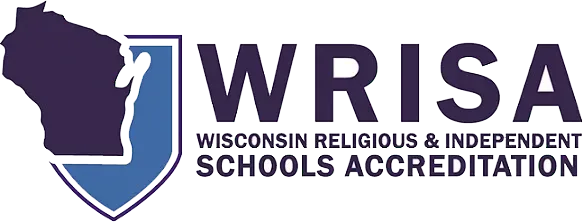Enrichment classes
Art
Students develop a knowledge base in the following area of visual arts
- Design
- Color
- Shape
- Contrast
- Sculpture
- Painting
- Drawing
- Paper Art
- Textiles
Students are exposed to a knowledge base of art history, cultural art and careers in art. Art education teaches visual literacy. Student art work is showcased throughout the school year and the 8th grade has the opportunity to design the yearbook cover.
Health
At St. Gabriel Catholic Parish School, we have a comprehensive K-8 Health Education curriculum. Based on our appreciation of Catholic teaching, as well as the State of Wisconsin Model Academic Standards, health education at St. Gabriel is intended to promote healthy, life-long habits for living well.
- understand concepts related to personal health promotion and disease prevention
- practice behaviors to promote health, prevent disease, reduce health risks and honor God-given gifts and abilities
- use goal-setting and decision making skills to enhance health
- demonstrate the ability to access valid health information and services
- analyze the impact of culture, media, technology and other factors on health
- demonstrate the ability to use effective interpersonal communication skills to enhance health
- demonstrate the ability to advocate for personal, family, school and community health
Music
Students develop a knowledge base in the following elements of music:
- Rhythm
- Melody
- Harmony
- Style
- Expression
- Students master basic music theory and notation.
- Students develop a knowledge base of basic vocal technique and performance.
Our music program is strongly based in vocal music, with concerts given in the school year.
Physical Education
Students at St. Gabriel Catholic Parish School will enjoy and exhibit a physically active lifestyle, demonstrate competency in many forms of movement and proficiency in some, will apply concepts and principles of movement to skill development and understand that physical activity has components of strength, endurance and flexibility.
Students will:
- Demonstrate motor skills necessary to participate in a wide variety of physical activities.
- Understand the link between physical activity, good health and learning.
- Understand that physical activity is fun and benefits well-being.
- Explain the relationship between resting pulse and increase heart rate with exercise.
- Demonstrate an understanding of basic first aid.
- Select and participate regularly in physical activities for the purpose of improving skill and maintaining good health.
- Understand what equipment is necessary for safe participation and be able to explain the rationale for its design.
- Understand sport concepts as a participant and spectator.
- Demonstrate good sportsmanship and respect for opponents and officials.
By the end of Grade 4, students will:
- Demonstrate progress toward the mature form of all locomotor (movement) patterns and selected manipulative and non-locomotor skills such as throwing, catching and kicking.
- Adapt a physical skill to the demands of a dynamic, unpredictable environment such as balancing with control on a variety of objects.
- Acquire beginning skills in specialized movement forms such as dribbling and passing a basketball to a moving receiver or jumping and landing for height/distance using mature forms.
- Apply combined movement skills in a variety of settings.
By the end of Grade 8, students will:
- Demonstrate competence in numerous versions of lifetime sports (tennis, basketball, hockey, gymnastics, softball, volleyball, track and field, football, soccer).
- Develop strategies for competitive games using basic offensive and defensive strategies in team sports.
- Demonstrate increasing competence in more advance specialized physical skills, including officiating and coaching.
- Choose to participate in organized or recreational sports.
- Explore how people can enjoy an activity if they are not gifted athletes.
Spanish
Students in grades 1-8 are taught by a qualified elementary level language teacher using developmentally appropriate activities to instruct and inform young learners.

